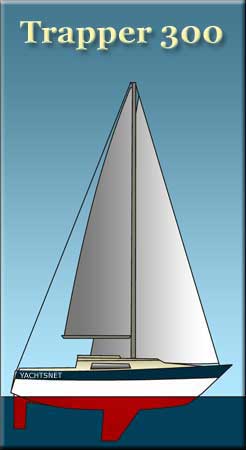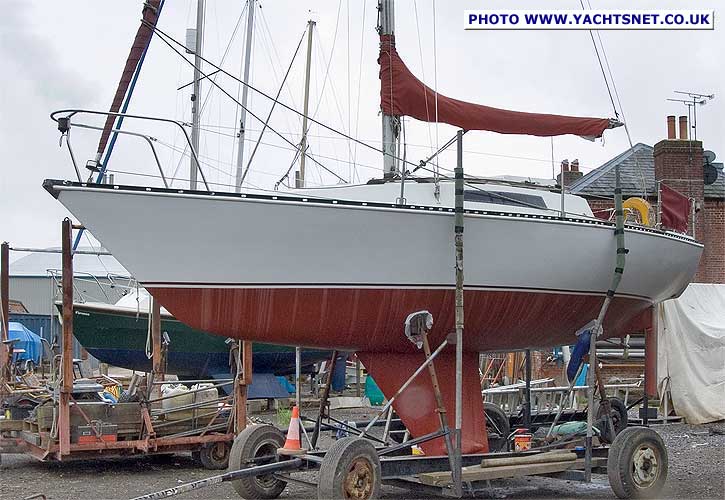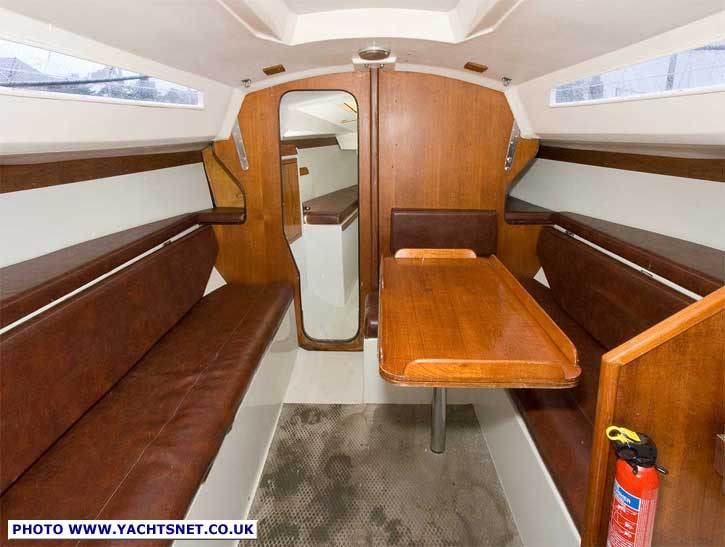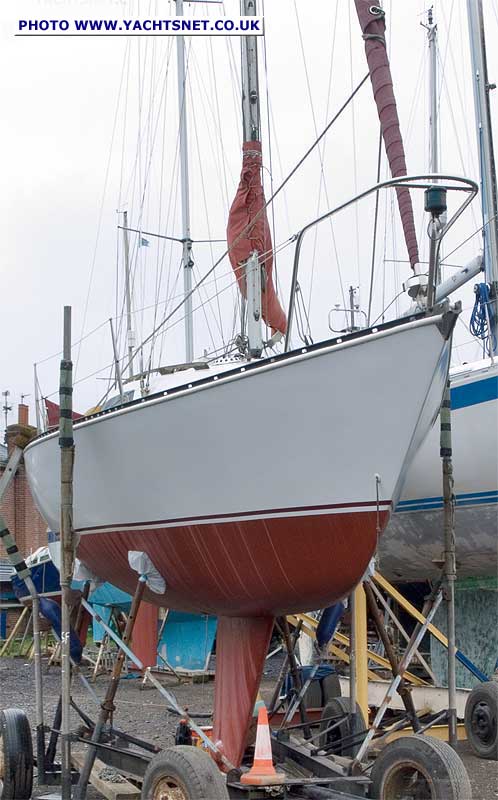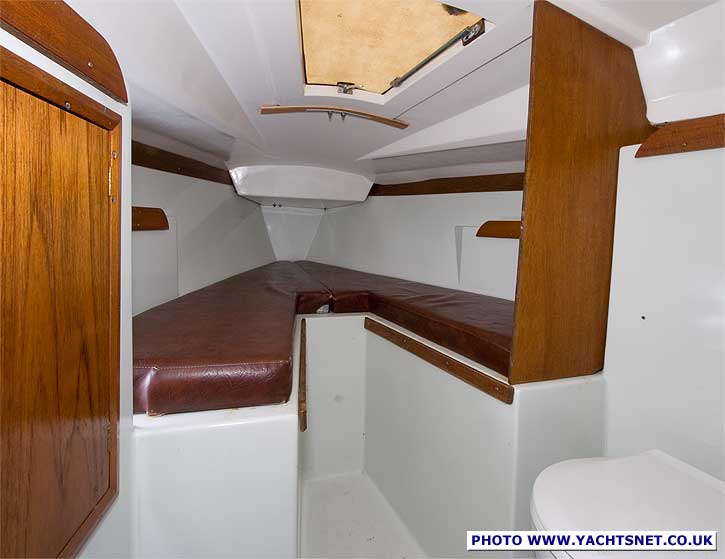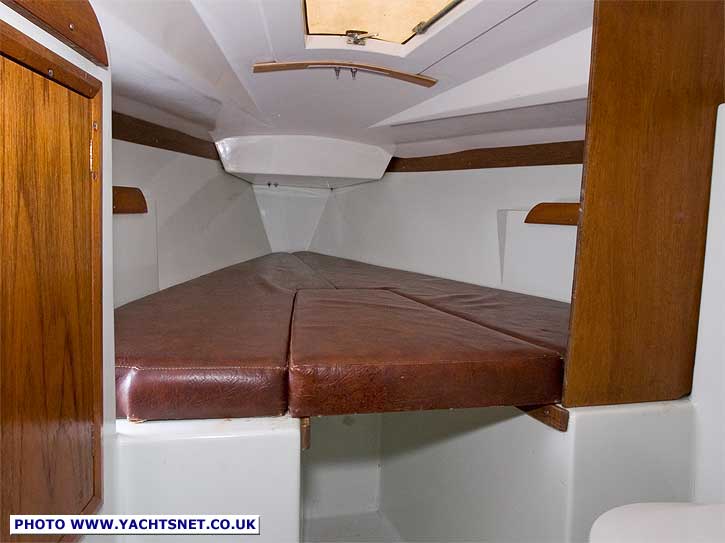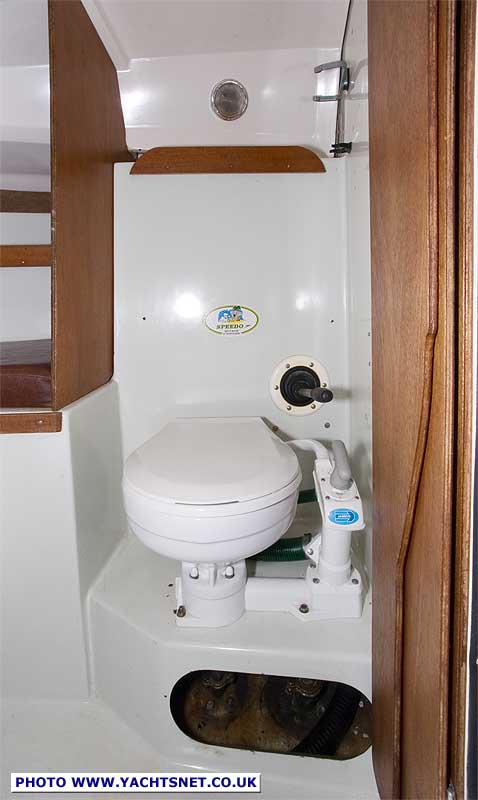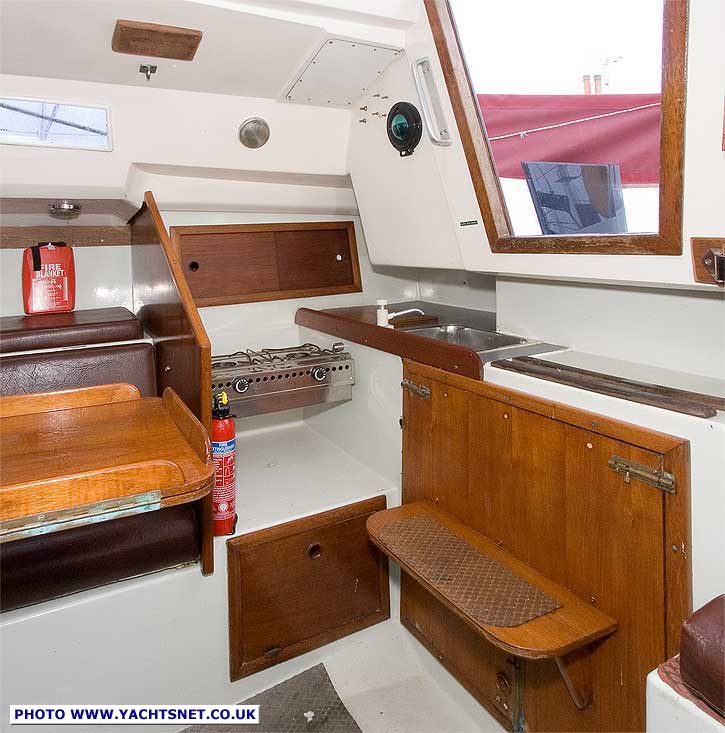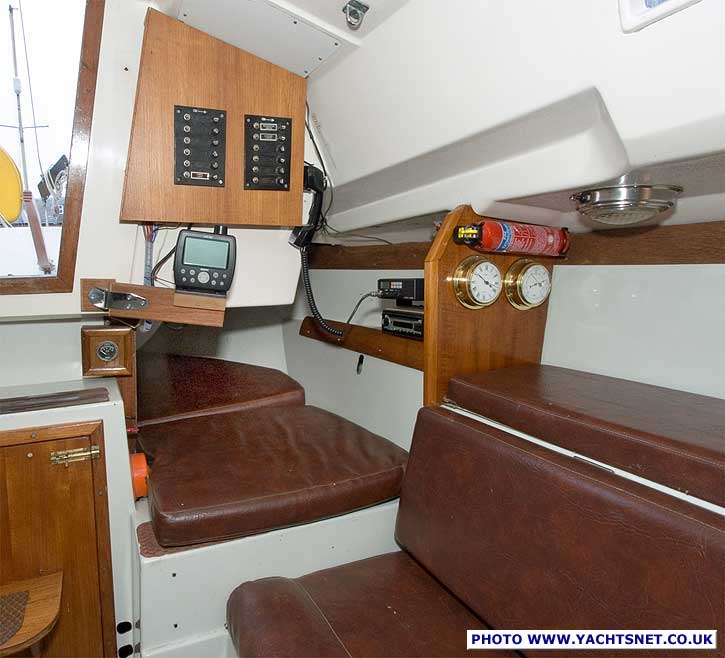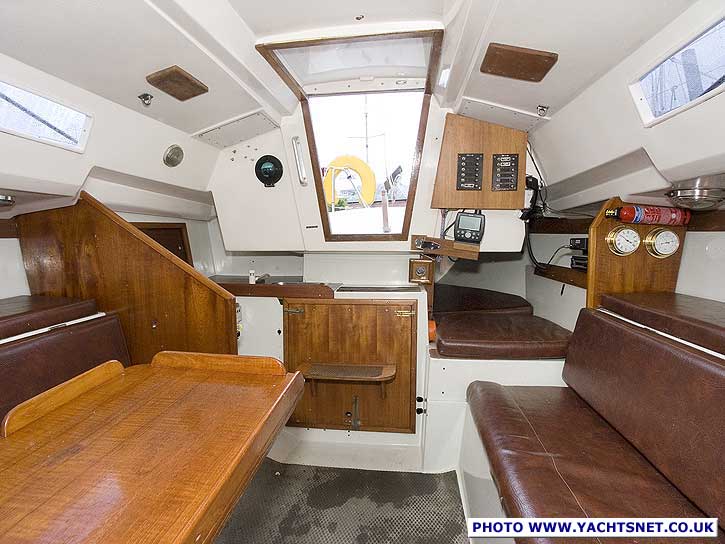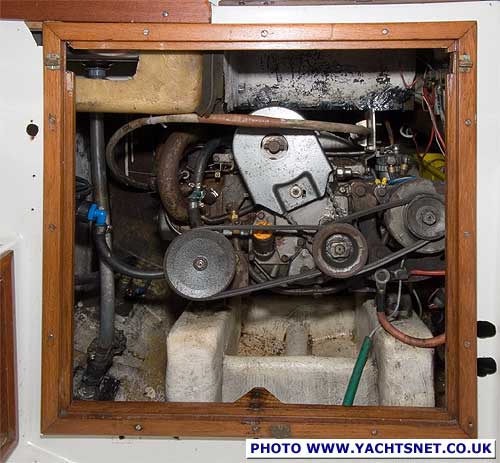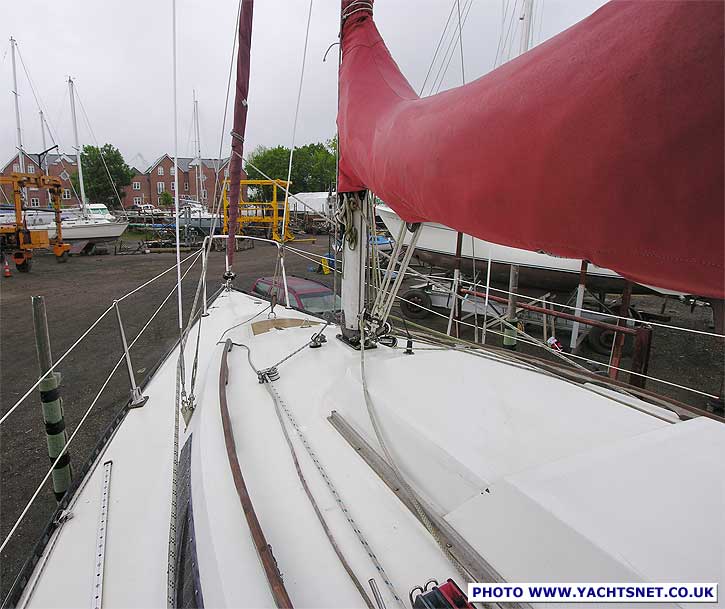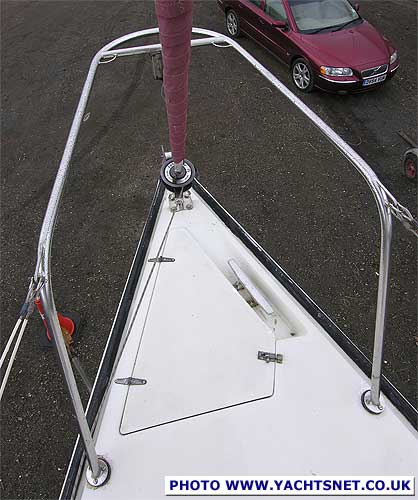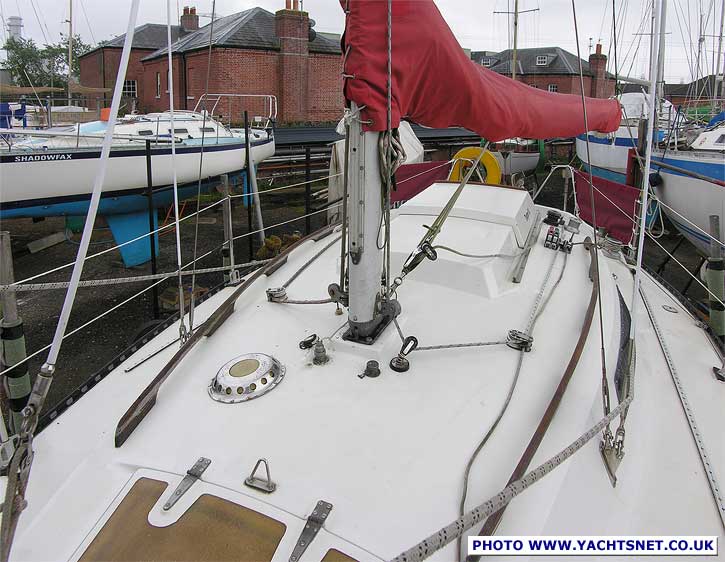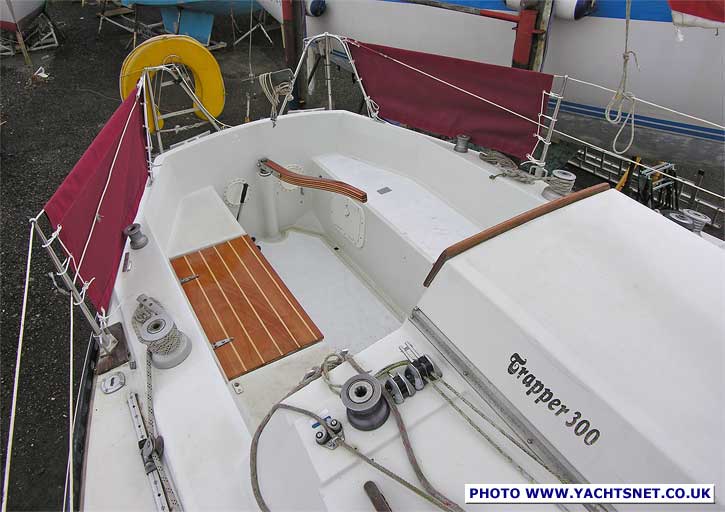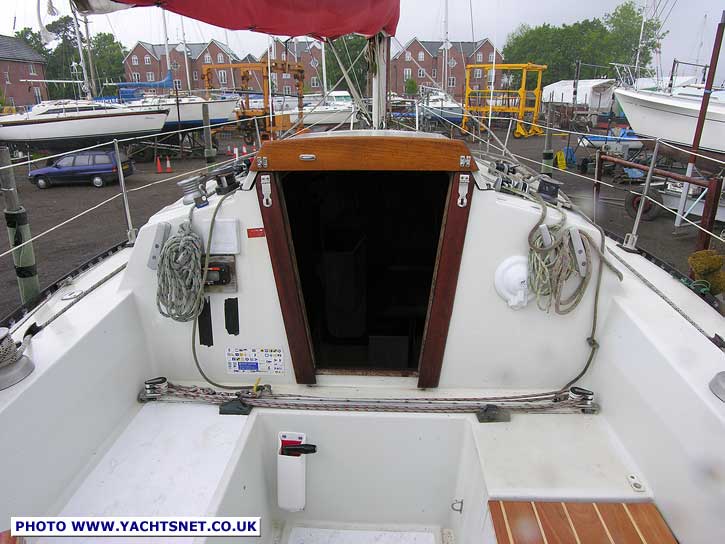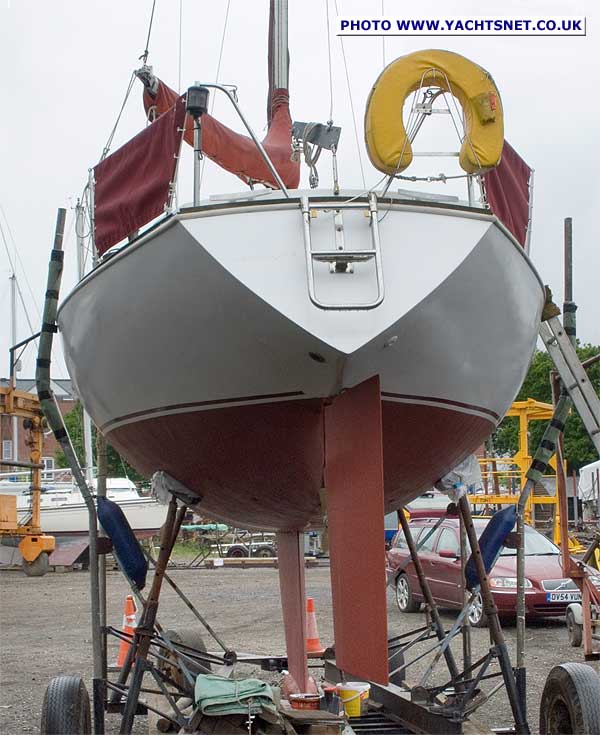| |
|
|
|
|
|
|
|
| © Yachtsnet Ltd. 2000/2025 |
|
|
|
| |
|
|
Yachtsnet's
archive of boat details and pictures
|
| |
The following information and photographs are
displayed as a service to anyone researching yacht types. HOWEVER THE PHOTOGRAPHS AND TEXT ARE COVERED BY COPYRIGHT, AND MAY NOT BE REPRODUCED WITHOUT THE PERMISSION OF YACHTSNET LTD. Details and photographs
are normally based on one specific yacht, but could be a compilation.
No reliance should be placed on other yachts of the same class being
identical. Where common variations exist, we have endeavoured
to indicate this in these archive details. |
Trapper 300
|
Brief details |
Builder |
Trapper Yachts, Poole |
The Trapper 300 is
a 1970s-era cruiser-racer that offers good performance, with the
potential for club racing as well as fast cruising. |
LOA |
26' 3" |
Sail area |
360 sq ft |
LWL |
20' 6" |
Rig |
Sloop |
Beam |
9' 6" |
Cabins |
Saloon & forecabin/heads |
Draught |
4' 10" |
Berths |
5 |
Displacement |
4,410 lbs |
Engine |
usually Yanmar diesel |
Ballast |
2,028 lbs |
BHP |
8 |
Keel type |
Fin keel and spade rudder |
| |
The Trapper 300 was designed for Trapper Yachts
in 1976 by Bruce Kirby, designer of the Laser dinghy. The
prototype was a quarter-ton racer, but the Trapper 300s were
all built as dual-purpose cruiser-racers. In total about 180
were built, with two different interior layouts. The Mk I,
of which the boat illustrated is an example, had a more racing-derived
fitout, whilst the later Mk II boats were more aimed at cruising,
with simpler deck gear.
In common with most other quarter-tonners of the period, the
Trapper has wide beam and very flared topsides, giving a lot
of power to windward if you put crew weight outboard on the
rail. Nevertheless, she has enough ballast to be sailed efficiently
without racing-style crew placement. At least one has been
sailed transatlantic with a crew including three children.
|
The design is fast to windward, and not slow
offwind. In May 2009 "Practical Boat Owner" reviewed
the class, and reported that the boats were ".... light
on the helm and delightfully responsive; one of the few boats
that you want to sail for the pure fun of sailing." |
|
|
|
